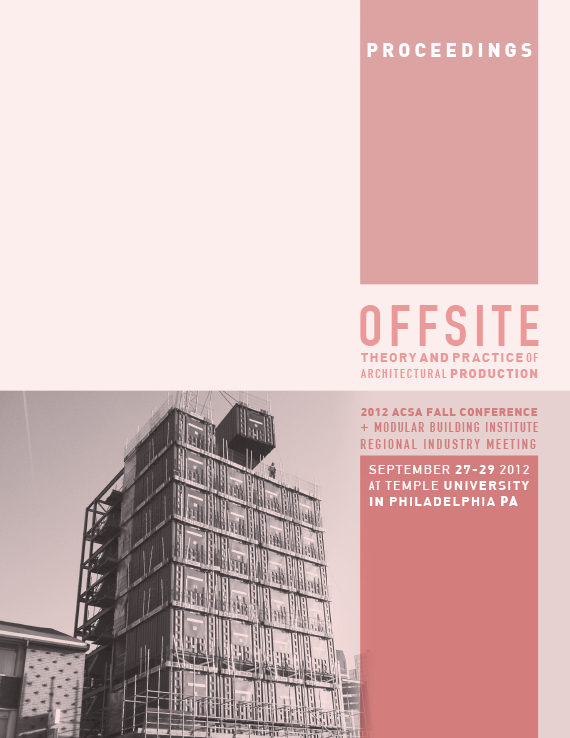Author(s): Roger-Bruno Richard
As an industrial product normally comes out of the factory completely finished,the same is expected with buildings. Factory production (“pre” fabrication) isthe first degree of industrialisation. The next step is to apply the strategies &technologies of industrialisation to reach a large market. Then, quantity willjustify the investment in processes capable of simplifying the operations andeventually getting quality architecture available to the vast majority of people.But as buildings are site-related and industrialised technologies normallyfactory-related, the interaction with the site is still an important vector in thegeneration of an industrialised building system. Accordingly, three categoriesof Building Systems can be outlined: the site intensive Kit-of-Parts; the Factory-made Module and the Hybrid.In a sense, these three categories are like the basic three colours (i.e. blue/red/yellow) on the initial “palette” from which an artist can mix the proper huesfor his painting. Those three categories will generate 9 building systems types:from “A” to “I”. No one type or system is better than the others: there is noWorld Champion, only systems more relevant to their context.The four types of systems within the site intensive KIT-OF-PARTS (“Meccano”)category are distinguished by the geometry of the structural sub-system whichdetermines the jointing to do at the site which becomes the “final assemblyline”. Using dry mechanical joints, most of these components can be dismantledand reorganized into a modified or relocated building, thereby allowing forchange without demolition according to the sustainability agenda.In highly industrialized countries, FACTORY-MADE 3D MODULES are quiterelevant as they maximize factory production. Road transportation rules inNorth-America are permitting modules up to ± 4.5 m X 14m whereas theJapanese modules are limited to ± 2.5 m X ± 5.6 m X ± 2.8 m.The HYBRIDS are aiming at the best of both worlds. The Load-BearingService Core is concentrating the complex parts of a residential building insmall value-added modules and reducing the job-site activities to simpledry connections to generate large open “served” areas. With Site Mechanization,the site becomes ± a precast concrete structure factory whereasthe other sub-systems, being complex and compact, are better served byfactory-made components.
Volume Editors
John Quale, Rashida Ng & Ryan E. Smith
ISBN
978-0-935502-85-5

 Study Architecture
Study Architecture  ProPEL
ProPEL 
